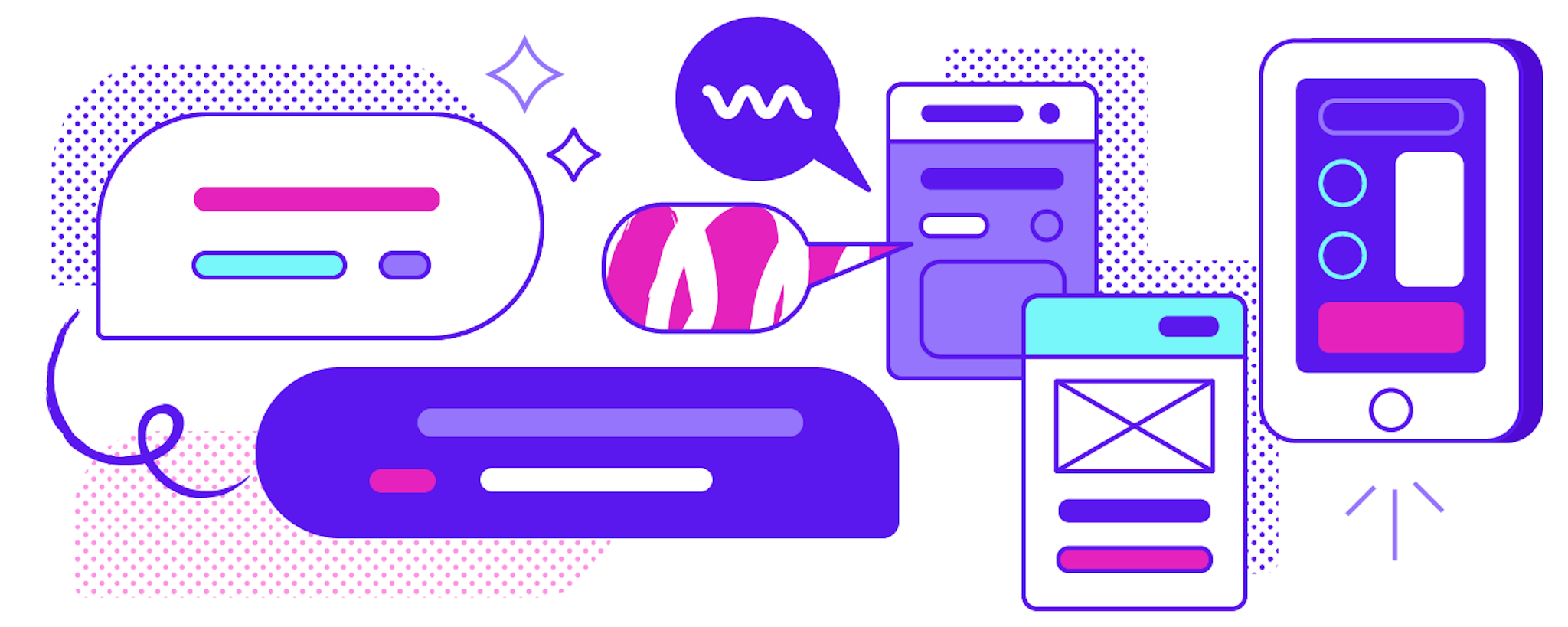April 5th, 2016
Bots Shouldn’t Be Scaled-Down Versions of Existing Products
Alex Weidauer
My co-founder Alan and I were pretty skeptical about bots when we first started to think about them last year. In this series of posts, we want to share what changed our mind and what we've learned exploring bot-native UX.
This is part 1. Part 2 explores personalization and part 3 collaboration.
Without meaningful new UX paradigms, bots will be just another fad. People initially try to port existing products when a new platform comes along. We saw this for the transition from web services to mobile apps or from iOS to Apple Watch apps. However, just designing a scaled-down version usually doesn't work as new platforms have new limitations and features that totally change the user experience. Over time, native experiences might evolve as developers and designers see what really works. For instance, the iPhone with its smaller screen and less powerful CPU than a PC (=limitations) but new things like location and camera (=features) enabled truly mobile-native experiences like Uber and Snapchat.
It's still unclear how this will play out for bots and messaging apps as platforms. But given our own experience in prototyping bots in the last couple of months, we see opportunities for bot-native UX and with that bot-first products.
Bots make software more accessible, once again
Bots are part of a much bigger trend towards making software more accessible. Repeatedly, innovations like the GUI or the iPhone have allowed a wider set of the population to use computing and thus "democratised" software. The current wave of democratization is conversational, allowing people to use software simply by talking to the bots in a "human" language as opposed to a "computer" language (e.g. conversational commerce).
Bot-first products: Reducing friction for non-experts to use expert software
Assuming there is opportunity for bot-first products, which problems can bots solve best and how does a bot-native UX work? As with every good product, you should start with talking to your customers.
What problems do your customers have that are better solved with a bot? It's important to understand the underlying job for which people use a product and whether that job can be improved with a bot-first experience. We see a great opportunity for bots at reducing friction for non-experts to use expert software.
Take for instance Google Analytics. Marketing people may be proficient users, but the friction for developers (=non-experts) to look up a few numbers every other month is high as they need to (re)learn how to use the interface (and probably hunt for login credentials). That's not because they're stupid or don't care, it's just a matter of priority and focus. Statsbot is a good early example of how this can be improved. The bot brings Google Analytics data right inside Slack, where developers are already logged in and can use a interface they already know how to use with a limited set of features.
One bot to rule them all? Better start with a narrow domain
Theoretically, if bots are great for reducing friction, shouldn't there then be just one bot that reduces all the friction to all expert software? One bot to rule them all! Although sometimes the media makes us think differently, there is no spooky, wild, human-destroying general AI yet that can automatically answer all your questions (also see Ben Evans' excellent post).
Instead, picking a narrow domain for your bot is key to deliver clear value to your customer and set the right expectations. In fact, making clear what your bot can and can't do helps to overcome the initial inertia of users not knowing what to ask the bot (similar to "awkward silence" in human conversations) and allows developers to send timely and relevant notifications ("hey, your trip to London is coming closer - do you want me to suggest you a few hotels?").
Two avenues to explore a bot-native UX: Personalization & Collaboration
The gold rush for bots has started. Who will win the messaging platform war? What role will iOS and Android play? How do people want to "talk" to a bot - via plain text, buttons, voice? It's unclear yet and there are many more open questions. However, it's all about conversations. That's why we think bots are here to stay with the potential to massively reduce friction.
With more bots and platforms, more avenues for bot-native UX will emerge. In the last couple of months of our work, we have seen at least two: personalization and collaboration. We're going to explore both more in detail in our following posts.
Thanks to Alan, Cat and Matthaus for taking a look over this post before publishing!
Interested to join us building more human-like bots? We're hiring!
